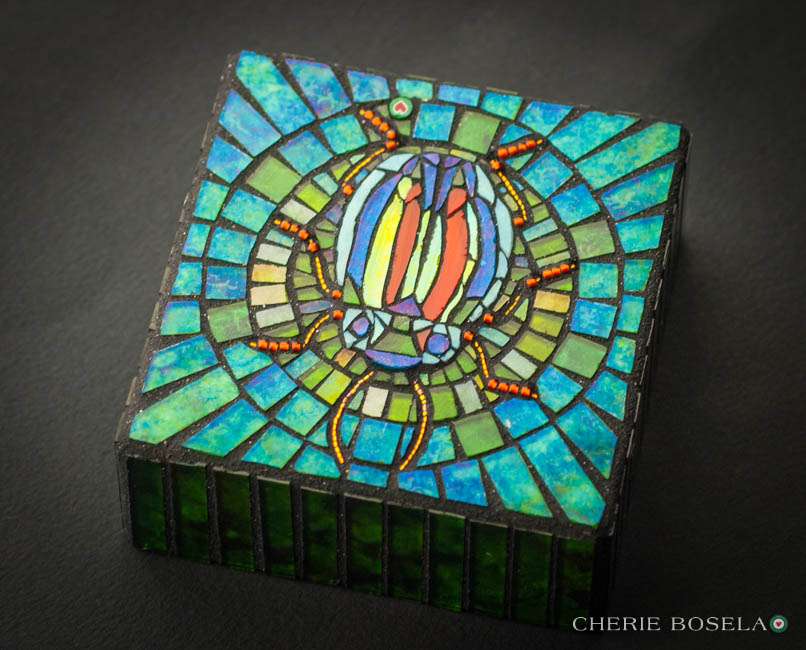Muse on a deep reflection
in an environmentally compromised world
Ever since she could pick up a pencil to draw, Cherie Bosela has been involved in art education and art-making. She grew up in Central Florida in a calm neighborhood overlooking panoramic views, where she was inspired to learn photography. As far as she took her first photography class in high school she decided to carry on the medium through college. Today, Bosela has a bachelor degree in fine arts, graduated in 2001 from the University of Central Florida. After exploring many art mediums in college, she kept on searching her very own medium, giving her an edge over her colleagues. Since she had been experimenting photography for so long, but she couldn’t expect to convince everyone that photography can be art. Consequently the artist has decided to look beyond the method of making an image and appreciate the print instead for what it communicates to her. Photography, though, was always missing the hands on building, craft and creating. In 200 Bosela, made her first mosaic, but this piece ended up in garbage. Not happy with her results, she bought a few books about mosaics and started playing around with different types of tesserae. Then she started linking her photographs underneath the glass. Gladly, she felt like she finally found her art medium! Her art work has been included in regional and global art exhibitions and fairs, for example: The Museum of Glass in Tacoma, WA, 1st Thursdays, The Orlando Museum of Art, Mayor’s Gallery in Orlando’s City Hall, CityArts Factory, Lexington Center Museum & Gallery, and Williams Tower Gallery, Houston, TX .
Latterly, several pieces of her mosaic patterns was published in “Bonnie Fitzgerald’s Guide to Mosaic Technique”. She has won several awards for her mosaic work. In 2014, she joined the Society of American Mosaic Artists Board of Trustees and has been awarded many prizes and commendations in various mosaic art and photography contests.
Her mosaics has shown a new freedom of expression.Most recently, she has been engaged in an ongoing series about insects. Her mosaics tackle specific studies of insects and how they interact with their environment and other species.
Classifiable as both impulsive and seemingly trivial, insects have long been a desired subject for artists.
But the question remains: Are Insects Conscious ?
– The Guardian
Absence of evidence is not evidence of absence
Black and Yellow Argiope Spider Mosaic
The question isn’t about imposing beliefs; it’s about whether insects are conscious or not. As reported by Carl Sagan, the absence of evidence is not the evidence of absence. Just because there is no proof that something exists doesn’t mean that it doesn’t exist. It is often used scientists to respond when people say there is no evidence for aliens. Thus, we can’t proclaim that animals don’t have consciousness just because, we can’t understand their species-language or moves.
This mosaic pattern was handcrafted using stained glass, Czech beads, glitter and original photographs underneath the glass. It has been selected to be featured in the Mosaic Arts International exhibition at The Museum of Glass, Tacoma, WA.
– Dragonfly
Evidence of Consciousness
Dragonfly Mosaic Of Flame Colors
Insects cannot pile up, nor work from memory to repeatedly run a maze or reach for detectable food by a learned, roundabout road. Nonetheless, that doesn’t mean they don’t sense and explore their environment. Most of these insects have senses to explore with an innate and foraging pattern of activities. Learning, as an upshot of consciousness, requires time, something short-lived species do not have, but terrestrial vertebrates, like humans, have in abundance.
This mosaic pattern was handcrafted using stained glass, millefiori, beads, tempered glass, glitter, painted grout and original photography under the glass. It has been exhibited in the Mosaic Arts International exhibition at Lexington Center Museum & Gallery – Lexington, KY.
– Khepri
Insects Mythology
Dung Beetle Mosaic Of Ocean Colors
Since the dawn of humanity, the organisms who are sharing our world have captured our mind’s eye and manipulated our thoughts, dreams, and fears. This influence is particularly true of insects, which impact nearly each surface of human activity. In addition to serving as objects of scientific inquiry, competitors for resources, carriers of disease, and food, insects have played a wide variety of different roles in the mythology of Native American and Egyptian tribes.
This mosaic pattern was handcrafted using stained glass, beads and original photographs underneath the glass.
– Bumble
Bridged The Natural World To The Underworld
Bee Mosaic Of Honey-mustard Colors
The more, scientists delve into the genetic and neurological source of emotions, the merrier evolutionary origins of emotions will undoubtedly be gradually unearthed. Perhaps this may take scientists a step closer, intending the evidence that animals experience emotions and empathy, discarding extravagant humanist ego.
This mosaic pattern was handcrafted using stained glass, mother of pearl beads, seed beads, photos and millefiori.
Classifiable as both impulsive and seemingly trivial, insects have long been a desired subject for Oriental artists. Latterly, scientists have revealed that dogs have human-like emotions like jealousy, agony and love and affection. They also revealed how cows express positive emotions through the white of their eyes. But, what about insects?
What do you think, are insects conscious? Why?
Share your comments below!
Portfolio: www.cheriebosela.com
Have you ever heard of this ingenious contemporary artist or her miscellaneous mosaic patterns?
Share with us your thoughts in the comment box below.
Enjoyed this article?
You May Also Like: MOSAIC PATTERNS: CELEBRATING CLIMATE IN PIECES
Don’t Forget to Subscribe to our Newsletter for Weekly Updates on Mosaic Art, Decor, Creativity and Much More!








